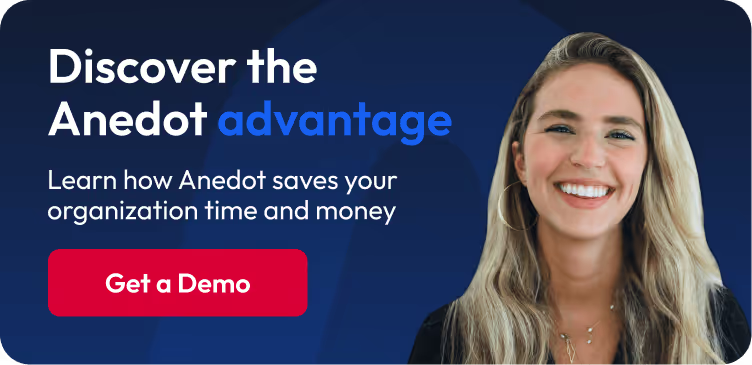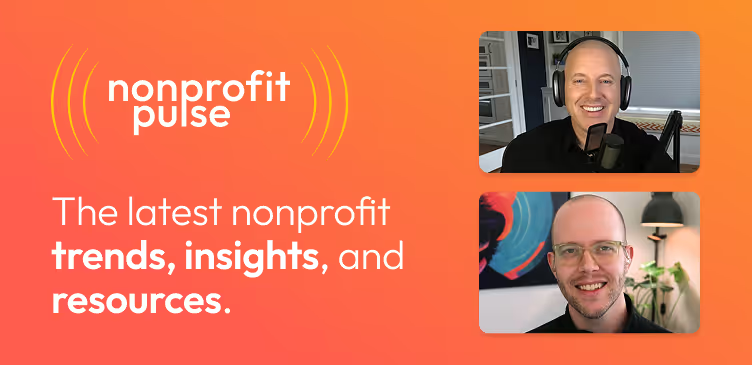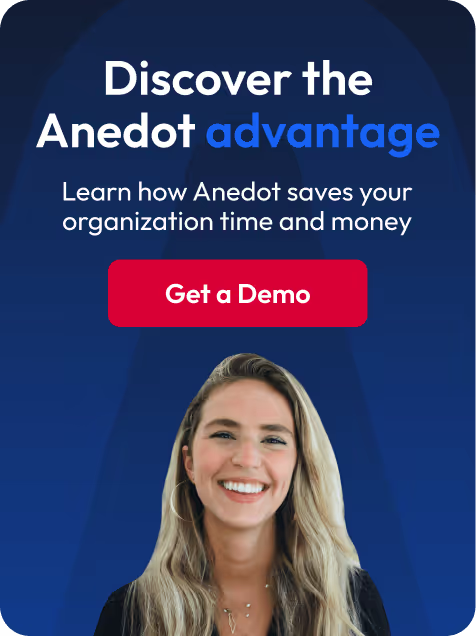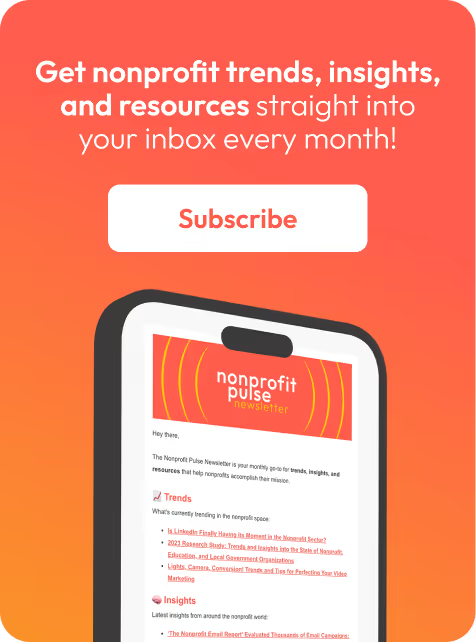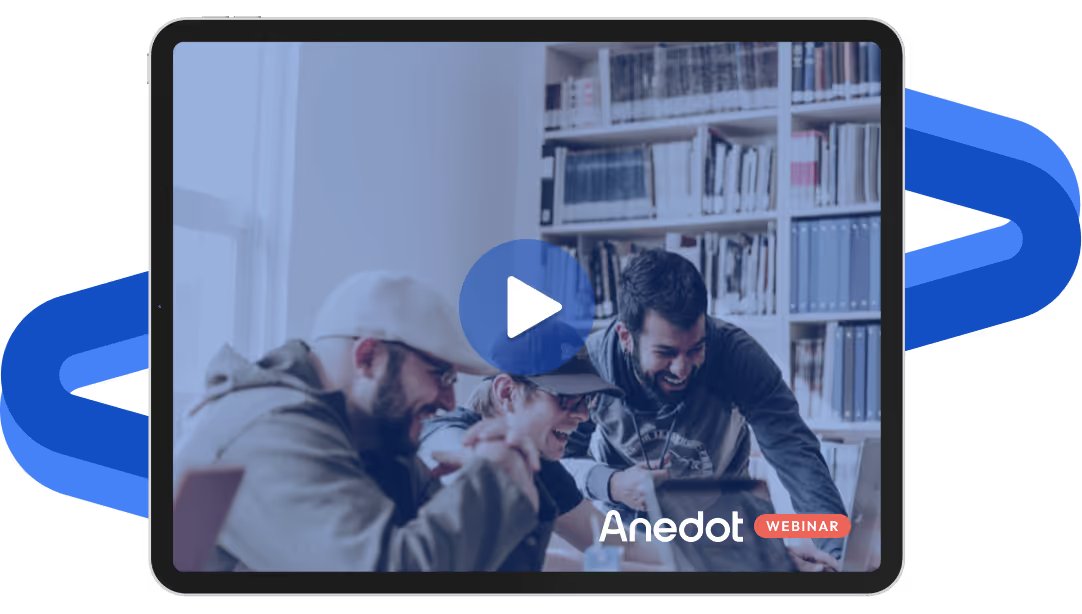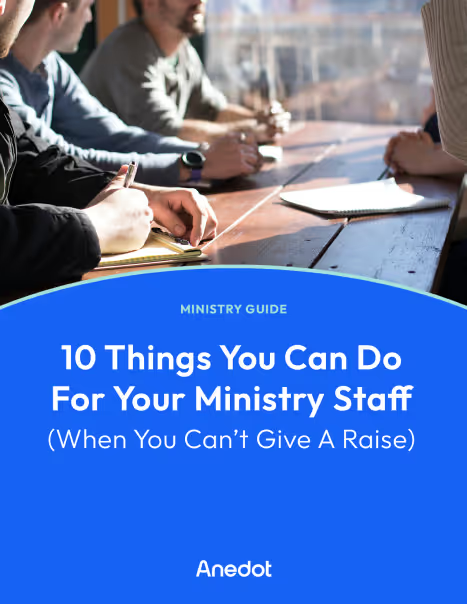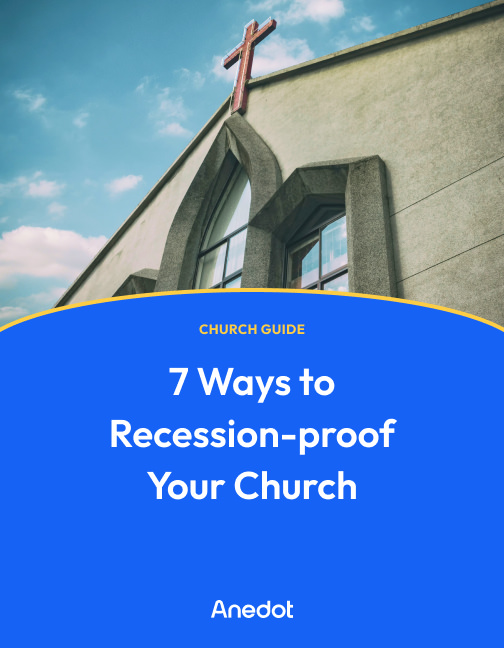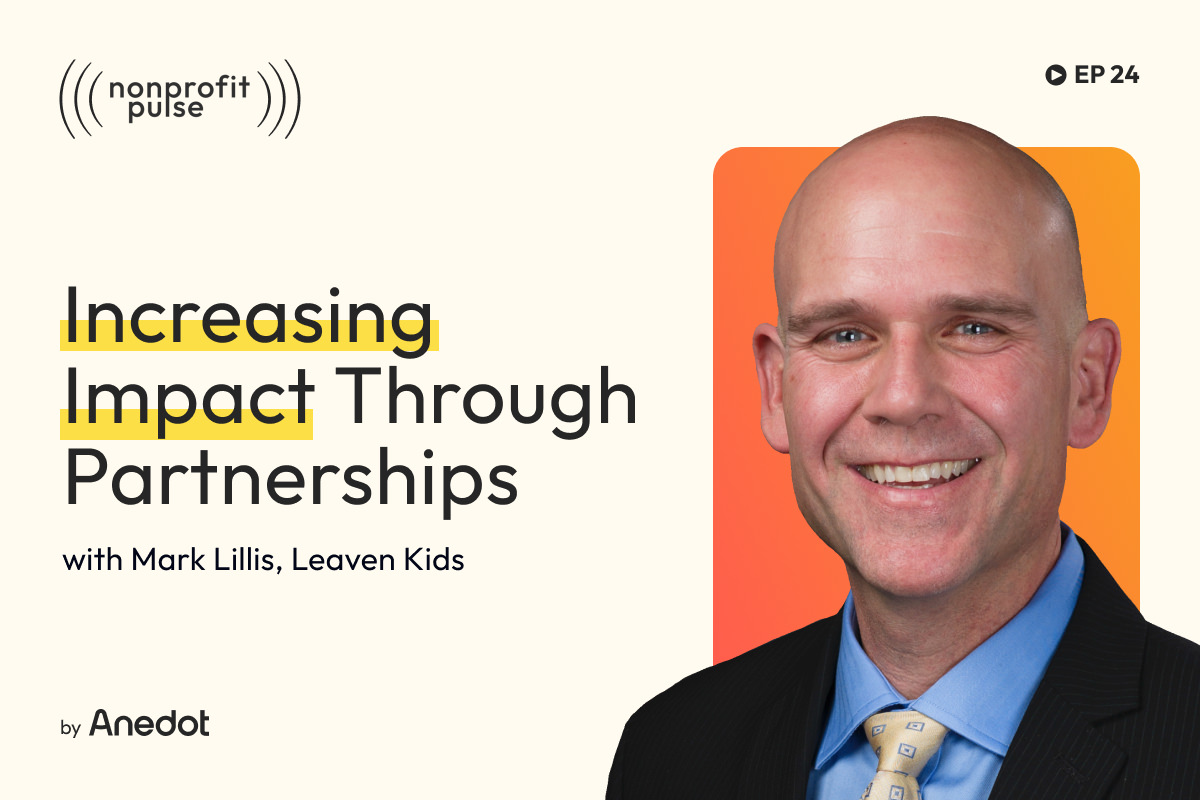Podcast episode transcript ↓
Josh:
You might not see it happening, but a tangled, unclear brand could be quietly holding your nonprofit back.
Supporters don’t connect. Volunteers lose steam. Fundraising feels harder than it should.
So what role should leadership play in bringing clarity back to your message? What conversations need to happen to bring leadership and teams together?
And how does strong leadership translate into a brand that inspires and drives real results?
I’m Josh with Anedot, and welcome to Nonprofit Pulse, where we explore trends, insights, and resources that help nonprofits accomplish their mission.
On this episode, we’re joined by Lyn Wineman on why a tangled brand could be holding your organization back.
Lyn is the founder, president, and chief strategist of KidGlov, leading growth through strategic branding for regional and national organizations.
She has won multiple awards from the American Marketing Association and is a dedicated community leader, having served in key roles with the Lincoln AMA, Midwest Ballet Company, Red Cross, and University of Nebraska.
Hi, Lyn, thanks for joining us on Nonprofit Pulse.
Lyn:
Hey, Josh, I'm so glad to be here. Really looking forward to this conversation today.
Josh:
Yeah, excited for our topic today. It's one that hits close to home for me, which is how brand clarity could be a game changer for nonprofits.
And we're going to be talking about your book today, which is really about unraveling the chaos of communication, to building trust with donors and energizing teams.
Your book really helps, make branding approachable and even fun, which it's not always a fun topic for some people.
But, I’m looking forward to digging into that with you.
Lyn:
Yeah. Josh, I appreciate you saying that. I think particularly in the nonprofit world, sometimes marketing and branding can be really intimidating because a lot of nonprofits, we’re just focused on delivering our service, our help to the world, and branding and marketing sometimes adds an extra layer of capacity or of complexity.
And what I want people to know is actually when you do it right, it makes it more fun, it makes it easier, it makes it more effective.
Why Untangling Spaghetti was written in a fable format

Josh:
Love it. Love it.
So maybe starting off, what really inspired you to write your book, which is called Untangled Spaghetti: A Branding Fable, and why did you choose the fable format for this book?
I personally love the fable format. It makes me think of The Five Dysfunctions of a Team from Lencioni.
So, what inspired you to write this book?
Lyn:
Yep. So, the first thing that inspired me to write the book is it was born out of 15 years of nonprofit branding experience.
What I have learned is that when a nonprofit gets their brand right, it just opens so many doors for them. It helps them become more recognizable and rememberable, it helps them lift their fundraising efforts. It sets the stage for a more positive internal culture. So much goodness comes out of it.
So in my mind, branding can be the great equalizer. And I want to give people those tools.
And we have created this process that when you do it right, it includes visioning, it includes research, it includes team building, all of the good things.
And I want to make that more accessible to nonprofits, because every week I have nonprofits call me that know they need better branding, better marketing help.
But maybe they aren't at a point right now where they can work with an agency like KidGlov.
And so through the book and through the downloadable tools and through the masterclass that we've built to go along with the book, we're giving that to you, for $14 for the book, a little bit more for the masterclass, but it really is just putting those great tools in people's hands.
And it felt like when we started to write the book, we wrote it as a how to Josh, we wrote the why this is important, here's the steps.
But when I read that first draft, I said, this is really boring. And I am a professional storyteller, right. And what storytellers know is that stories stick.
So we went back and we retooled and we said, you know what?
We need characters. We need dialog. We need a plot.
We need to actually show people what it's like to go through this process. And, that's where the fable came from.
8 key steps of an effective branding framework

Josh:
Yeah. So let's dig into that a bit.
Can you walk us through the key elements of this framework that you put together at your agency, KidGlov, and really how it's translated into the book.
Lyn:
Absolutely. So there are eight steps in the framework. The first five steps are all strategy based.
The first step is visioning. The second step is finding out what your audiences think.
The third step is seeing where you fit with your peers. The fourth step is brand archetype profiles. That's my favorite step of all.
The fifth is bringing your whole group together and getting an alignment on brand strategy.
Then you do the messaging, then you do the visual identity, and then you put together a launch plan.
So that's the framework in the shortest, easiest nutshell that I can give you.
And we incorporated this into the book by putting it through the eyes of a nonprofit executive director who was struggling.
Because what's interesting is if you've got brand confusion or a brand issue, the way that it shows itself is usually through leadership frustration, through lack of growth, through not meeting your goals, through low morale, through low engagement.
And so we found a leader who was working with a 70 year old nonprofit, a fictitious 70 year old nonprofit, who was experiencing those problems and not sure how to fix them.
So what the book is, is really a composite of the 150 nonprofits that we've worked with over the past decade.
And watching this executive director, her leadership team and her board executive committee go through this process together.
Why investing in brand clarity pays off even if you think you’re not ready

Josh:
Awesome, awesome. So we've probably got many leaders who are listening right now who they think they're not ready to enter into a brand project, a project seeking brand clarity.
And there could be many reasons for that. One would be budget, staffing, maybe just internal clarity around what they are as an organization, who they are, what they believe.
What would you say to those leaders listening now?
Lyn:
Yeah. What we have seen time and time again is that a strong nonprofit brand helps you build recognition and recall.
It helps lift your fundraising efforts, and it helps set that stage for a more positive internal culture, which are three things that almost every executive director wants.
And then if you add to that, a recent study has come out of McKinsey, the corporate consulting group, showing that organizations, whether they're for profit or nonprofit, who have a strong brand, find a 30% efficiency in the amount of time they spend on marketing because they've got that great structure in place.
So just like a lot of other things in the nonprofit world, you're going to invest in some marketing or branding infrastructure that's going to pay you a return later on.
But if you're really still struggling with, is this what I need to do? Is this where I am? The book is really an easy read. It's a great guide.
It's very relatable, very real that in a couple of hours you can read the book and go through the process.
And the second chapter of the book reveals a diagnostic tool that we use to help organizations decide, do they just need a brand refresh, maybe just the messaging tweaked or some of the visuals tweaked?
Do they need a full rebrand or is their brand great, and they just need to focus on building more recognition?
So you can just get to that second chapter and get a really good feel of what your path is.
And if you download the companion guide that goes with the book, that tool is right in there in the first three pages for you to dive into.
How a strong brand can transform a nonprofit’s impact and culture

Josh:
So Lyn, you said that a strong brand lifts fundraising efforts and shapes internal culture, can you give us a real world example of where this transformation happened?
Lyn:
Yeah, absolutely. I recently just talked with a nonprofit executive director that we helped with a rebranding.
It's been a couple of years now, and I actually was interviewing him on my podcast, which is The Agency for Change podcast.
And we talked a little bit about branding, and I didn't expect him to say this, but what he said was, Lyn, since we have rebranded, everything we measure has increased.
Our website visits, the number of people who come in to our programs, the applications to our job openings, and of course our fundraising.
And actually even their grant funding had increased because they had better messaging, more focused messaging to fill out those grant applications.
So and that was an organization that went through a full rebrand. They came to us with a name that was very confusing, very unappealing. It sounded like a governmental agency.
And what they left with was a name that actually meant something that spoke to what was special about their organization.
A logo and a visual identity that was fresh and vibrant and messaging that really helped everyone involved, the leaders, the board members, the people on the front lines explain what they do and why you should engage with them.
And when you have that kind of magic, it just produces a whole new energy around the organization.
How brand clarity builds trust, loyalty, and engagement
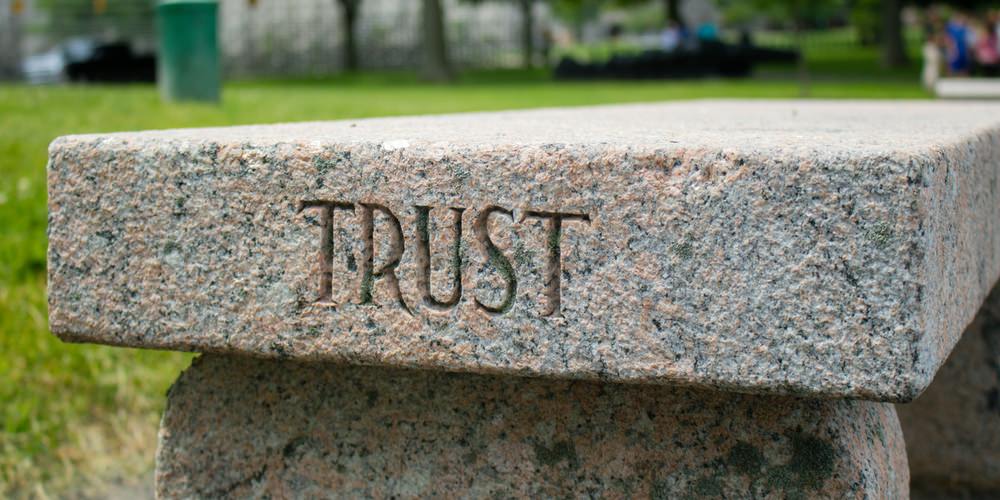
Josh:
Yeah. So let's look at that clarity piece because I believe that's huge.
And, nonprofits often struggle with clarity either because they're an older organization that is transitioned without spending a lot of time realizing and thinking deeply about how they've transitioned or, their services in their community, the needs have changed.
And it's just a different world they're living in.
So thinking about brand clarity, how does that contribute to, just a few items, maybe donor trust, volunteer retention, program participation, and how can nonprofits monitor those metrics or signals to really understand how that clarity is impacting and influencing and increasing all of those things?
Lyn:
Wow. That is a big, big question, Josh. So let me take it from the beginning and you stop me if you don't think I've answered it when we're done.
But let's start with donor trust, right. Because I think that's something that a lot of nonprofits need.
There's two key elements of branding that will really help you with trust.
One is consistency, right? When you have consistency, consistency actually psychologically translates to quality and trust.
And so I when I work with a nonprofit, I don't ever want them to have to say we have a quality program or that you should trust it.
I want the people who interact with their website, their fundraising materials, whatever they have, their impact report.
I want you to just feel that the way you feel it, you know, if you see a Lexus ad or a Subaru ad, I want you to just feel that they've got that level of quality and that level of trust.
Then when you layer on to that branded storytelling, there's actually also a decent amount of research right now that speaks to how storytelling produces emotion.
Emotion produces trust. And storytelling actually increases the oxytocin to your brain. And oxytocin is the trust hormone.
And so all of those things are really important, not just with fundraising, but as well as volunteer retention as well as hiring and retaining employees.
So it all kind of goes together. But a lot of times when we're talking about nonprofits, the tip of the iceberg that we're looking for is that fundraising element.
Why clarity and authenticity matter more than logos and colors

Josh:
So Lyn, when we think about common mistakes around branding that you see nonprofit leaders make, what are they?
Maybe a few examples and then what mental shifts do they need to make to avoid those mistakes?
Lyn:
I think the biggest one we see, which is why I'm so passionate about this process, is the biggest one is when people say, hey, we know we need to do something with branding, and they dive straight into the creative elements of branding, right?
They dive straight into the name, the messaging, the tagline, the logo, the colors, the fonts.
When really the key to making your brand really stand out and fit you authentically is all of the things that happen before you get to that point.
If you don't have clarity on who you are, what you do, and why people should care, those other things are just window dressing, right?
And you want a brand that's really authentic. Authenticity is going to beat out polish any day of the week, right?
It's got to feel authentic. And so, I think that's a key one. I think the other key one is I love the phrase sameness is the enemy.
Like especially right now at this point in time when we're in this kind of time of economic flux and government dollars are in question.
Right now, there are so many nonprofits that are jumping into the fundraising game in a bigger way than they ever have, and those nonprofits that need to increase their funding are going to have to stand out from the rest of the universe.
If you're just trying to be like everyone else, you are not going to stand out, and it's going to be those who figure out how to describe their impact or their services in a way that really tells their story differently.
Why leadership alignment is essential for brand clarity and consistency

Josh:
So continuing on that leadership area, what role does leadership play in alignment, in aligning that brand clarity and consistency, especially when boards or founders may have different visions or just different versions of that vision?
Lyn:
Josh, I love this question because I really do believe it's the leader’s role to find that alignment, right?
It's the leader's role to cast that vision and galvanize the board and the leaders of the nonprofit to get together so that they are on the same page.
And I think that's what I love about this untangling spaghetti brand advancement process is that it is built to develop that alignment.
As a matter of fact, in the process, you're starting to build the alignment before you even know what the brand is, because you're bringing people to the table together.
You're hearing a lot of different voices. It's very inclusive, very collaborative. And, that's what gets people together on this.
Josh:
Yeah. And having been involved in several of these exercises with teams, what's surprising is sometimes this is the first time they've ever sat together and had these candid, open conversations.
And I can tell you that the teams that are able to be candid and open will have much more success than the ones who feel like they need to protect themselves.
You know, back to The Five Dysfunctions of a Team, right? Trust is the foundation. And it is really tough if the trust is not there.
What I've seen happen in a lot of branding exercises is things surface in that exercise, that either pauses the exercise and says, hey, we need to figure some other things out first.
That is so healthy and good. And it just shows there needs to be a kind of a cultural change within that organization.
Lyn:
Absolutely. Josh, our process, it has two facilitated conversations, one at the very beginning to understand the vision of the leaders.
And oftentimes for nonprofits, we will say, have your executive director there, have your key marketing people there, have some representatives of the board there.
Usually it's not the whole board, but every once in a while, we'll work with a nonprofit that will bring in the whole board for that stage and bring in a few others from the organization.
I often say even bring in your biggest naysayer, bring in the person that's going to be hardest to convince because we want them to be part of the team in this.
So if we get all of those people together, casting the vision, we often find that it's as important for them to hear each other as it is for us to hear them.
And that is why we actually demand. And there have been times when I have stopped the meeting because we walk into the room and the key people aren't there, and it's like, well, this is going to be a waste of time if you're not all here.
But then we also bring them back in the fifth step. So, we get the vision at the beginning.
We do some other strategic steps. We pull that information together, we share the information, and then we collaboratively come to an agreement on what our brand strategy is going to be.
Directionally, what are we going to do with the name? Are we going to change it? Are we going to leave it? Are we going to tweak it?
What are we going to do with the rest of the messaging? What are we going to do with the logo? What are we going to do with the visual identity?
And KidGlov, we come into the process with ideas and recommendations, but before they invest any money or time in the creative elements, we want them to be aligned on that strategy.
So then when the visuals and the creative come together, it's really a reflection of what they as a group have come to.
So the process is guiding the way, bringing them all into alignment for what then gets created.
I have been in the situation where I have walked into a cold room once, even when the board members didn't even know that a new name was being considered.
And that's a terrible situation to have to walk in cold and say, hey, I'm coming in today to introduce a new name when you haven't, as a board, even come to the understanding that the organization needs a new name, much less what that new name needs to represent.
Josh:
You know, I only can laugh at that because I'm not inside of those organizations. But if you are, it is painful.
Lyn:
It's painful. Yeah, painful. So, honestly, in a over 30 year career and over 15 years of having KidGlov and working on creating this process, I've seen almost every way possible that a brand can get derailed.
And so the process is built to, A, provide the information that the marketing team needs to create the brand, but B, provide the information that helps the leaders be confident in making a good branding decision.
Downloadable tools from Untangling Spaghetti that you can use right now

Josh:
Lyn your book includes a few downloadable tools.
I know you've mentioned a couple in our conversation already, but, can you share some tools that are downloadable that are free with that book for our listeners?
Lyn:
Absolutely.
Josh:
And really, how that can help them?
Lyn:
Josh, it's actually 55 pages of downloadable tools and step by steps. And it takes every single step in the process.
Plus it provides some bonus tools, such as a template for building target audience personas as well. But we start in the beginning with that brand diagnostic tool.
We call it the brand compass, where you can go through and you can go through it yourself.
But I love it as a tool to work with boards to like, if you use that two page tool for a board meeting and go through that discussion together, it's really going to help you come together on where you need to go next. We have a brand launch planner in there.
So once you have the brand put together, you have a really good outline for how to identify your different audiences, what their pain points are, what your messaging will be, the tactics and the timing.
We have templates for a peer group analysis, so you can look at the other nonprofits who are maybe in the same space as you, the ones that your funders might also be looking at, and really look at how you visually and verbally differentiate from them.
We've got sample questions for an online survey to help gather information from your audiences.
So really, if you take the book, what you've got is a really good human based narrative.
And then if you put that companion guide side by side with it, you've really got a great roadmap.
And then Josh, if you really love that, the tool that we've added to that then is a masterclass, which is a ten week class.
We just finished our first live cohort and it will soon be online, in an on demand class format with live Q&A sessions.
So if you even you read the book and you're really interested and you've got the tools, but maybe you want to go through this with a group of people, a little more, one on one hand holding, we'll have that available as well.
Closing thoughts
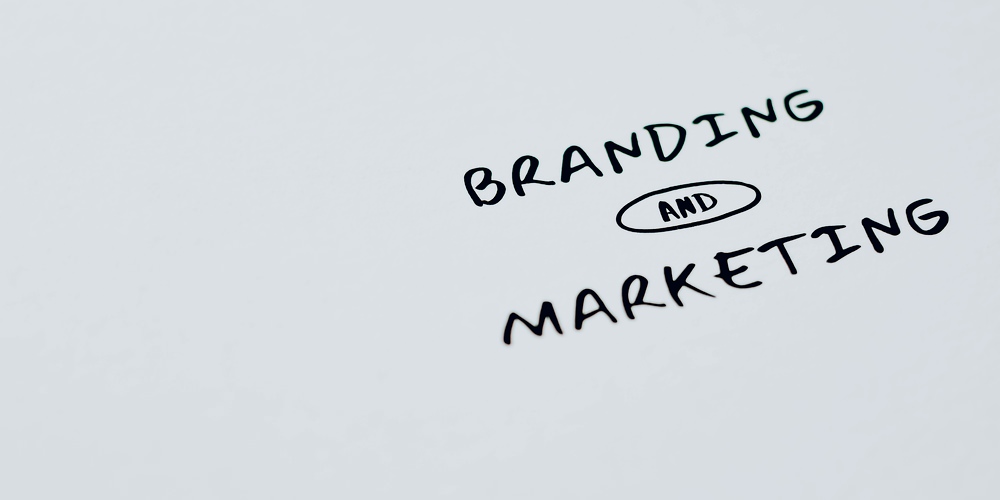
Josh:
So very practical question for listeners who may feel like their brand is currently tangled like spaghetti.
There's confusion all around it. What would you say to them about how they can start untangling their brand in the next seven, ten days?
Lyn:
Yeah, I would say I mean, the book is available online, get that book and download the companion guide right away.
Like those are the two easiest steps that you can do. And even if you don't want to go for the full book, if you go to Kidglov.com, we have a resources section of our website.
And that brand compass is in the resources section for free. You can download that brand compass and it will really help you out even just yourself, go through.
There's less than ten questions. Go through those less than ten questions and you'll have a good feel for where you should go.
Josh:
Awesome, awesome. And for our listeners, you can go to the show notes of this episode at Nonprofitpulse.com and find links to Lyn on LinkedIn, but also KidGlov’s website and these resources mentioned here.
Lyn, last question. It's my favorite question of every episode. If you were on stage in front of 1,000 nonprofit leaders and could share one thing about our topic today, one sentence, what would you say?
Lyn:
Yeah, this is such a good question. And I definitely have what I'm going to tell you.
I'm going to say marketing with a bad brand is like meeting with your best donor in sweatpants.
Josh:
It checks out I agree. Yeah, yeah I agree. Awesome.
Well, Lyn, thanks so much for your insights today. I hope everyone goes and checks out the show notes and finds you on LinkedIn, over at KidGlov’s website.
And picks up the book because I think every nonprofit, whether you're going to do this exercise immediately or in the next year, or even in the next couple of years, just go ahead and get the conversation started.
Understand what's out there, what can help you. And I think every nonprofit should be constantly assessing their brand, and probably most are ready for an in-depth, extensive brand project.
Lyn:
Yeah, absolutely. Josh, thanks so much for the opportunity to share. It's something I'm very passionate about, and I appreciate the work that you all are doing.
And this podcast as well, that's sharing really valuable resources with the nonprofit world.
Josh:
Thanks, Lyn.
Hey, thanks for listening.
If you enjoyed this conversation, please share or leave us a rating and review wherever you listen to podcasts.
Also, head on over to Nonprofitpulse.com to sign up for our monthly newsletter, as well as check out all the links and resources in the show notes. We’ll see you next time.
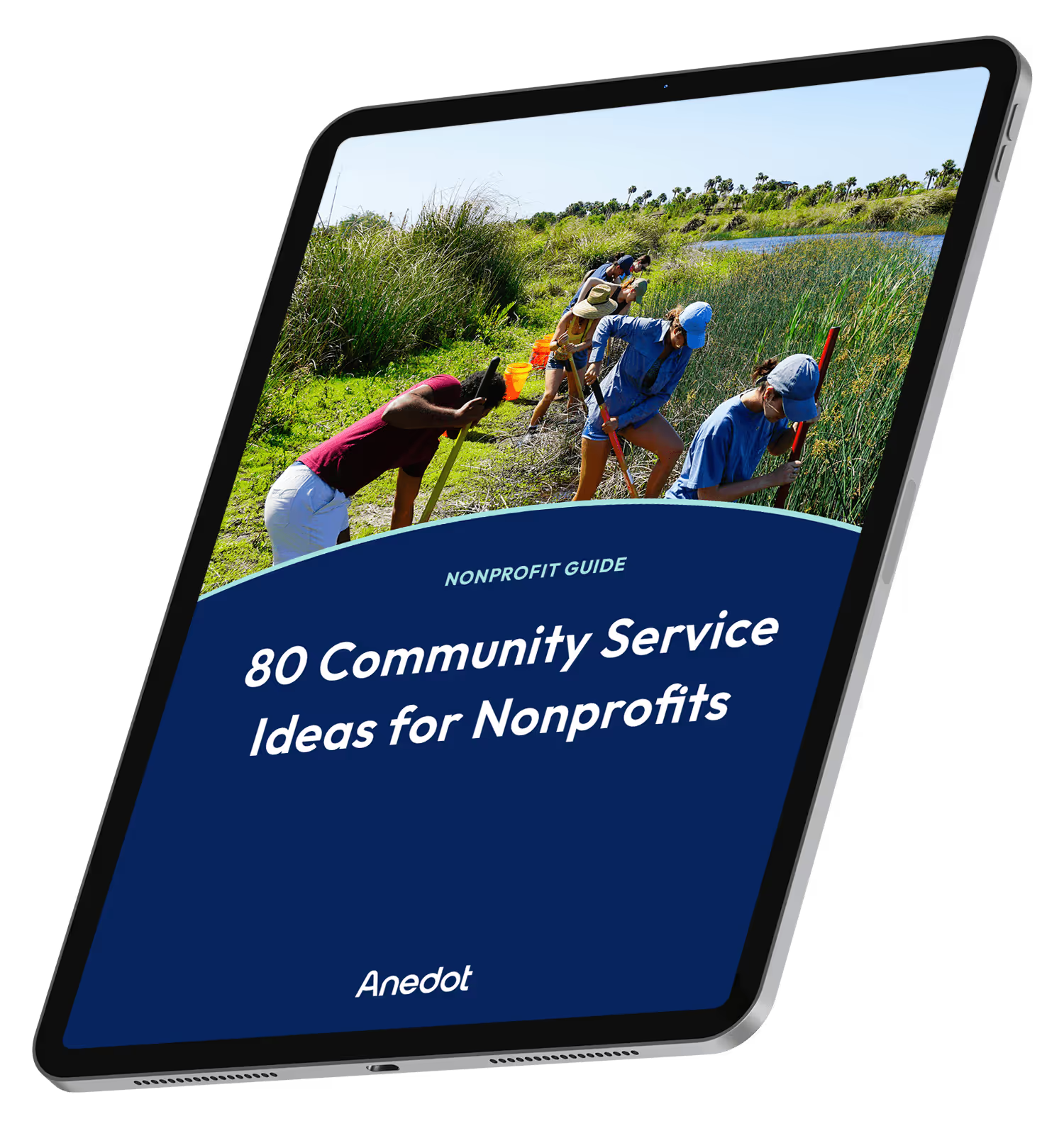
80 Community Service Ideas for Nonprofits
